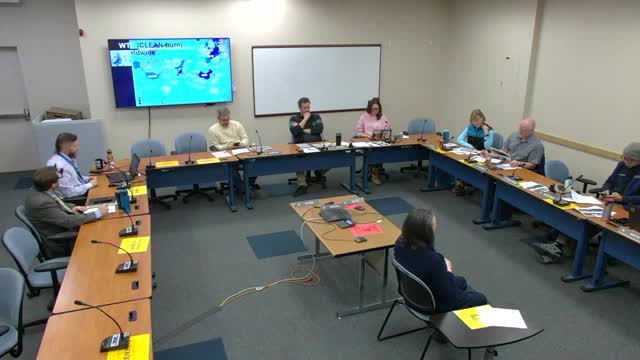Anchorage explores waste-to-energy facility to convert trash into renewable power
December 20, 2024 | Anchorage Municipality, Alaska
This article was created by AI summarizing key points discussed. AI makes mistakes, so for full details and context, please refer to the video of the full meeting. Please report any errors so we can fix them. Report an error »

The Infrastructure, Enterprise, and Utility Oversight Committee-of-the-Whole Meeting held on December 20, 2024, in Anchorage Municipality focused on the potential implementation of waste-to-energy technologies as a sustainable solution for managing solid waste and generating power.
The meeting began with discussions on the current state of waste-to-energy facilities in the United States, highlighting that approximately 75 facilities are operational, utilizing clean burn technology to convert trash into power. The committee noted that this technology is well-established, with a significant presence in Europe and Japan, where land constraints necessitate innovative waste management solutions.
Key points raised included the environmental benefits of waste-to-energy systems, which can reduce landfill usage and associated long-term monitoring of contaminants. The committee emphasized the importance of maximizing land use and minimizing the environmental impact of waste disposal. The discussion also touched on the challenges of managing leachate and landfill gas, which are significant concerns for the municipality.
Dave, a representative from the Anchorage Water and Wastewater Utility (AWWU), elaborated on the potential for recovering energy from biosolids produced at the Aspen Wastewater Plant. He noted that the facility currently incinerates about 75 wet tons of biosolids daily, which could be converted into energy, addressing both waste management and energy production needs.
The committee explored various waste-to-energy technologies, including anaerobic digestion and thermal processing, assessing their feasibility for Anchorage. The clean burn process was highlighted for its reliability, with an expected energy output of 20 to 30 megawatts, which could significantly offset the municipality's reliance on natural gas for power generation.
The meeting concluded with a consensus on the need to update the existing waste-to-energy plan, considering the evolving energy landscape and the potential for cost savings and revenue generation through independent power production. The committee recognized the importance of transitioning to renewable energy sources and reducing greenhouse gas emissions, positioning waste-to-energy as a viable solution for Anchorage's future energy needs.
Overall, the discussions underscored a commitment to sustainable waste management practices and the exploration of innovative technologies to enhance energy independence while addressing environmental concerns.
The meeting began with discussions on the current state of waste-to-energy facilities in the United States, highlighting that approximately 75 facilities are operational, utilizing clean burn technology to convert trash into power. The committee noted that this technology is well-established, with a significant presence in Europe and Japan, where land constraints necessitate innovative waste management solutions.
Key points raised included the environmental benefits of waste-to-energy systems, which can reduce landfill usage and associated long-term monitoring of contaminants. The committee emphasized the importance of maximizing land use and minimizing the environmental impact of waste disposal. The discussion also touched on the challenges of managing leachate and landfill gas, which are significant concerns for the municipality.
Dave, a representative from the Anchorage Water and Wastewater Utility (AWWU), elaborated on the potential for recovering energy from biosolids produced at the Aspen Wastewater Plant. He noted that the facility currently incinerates about 75 wet tons of biosolids daily, which could be converted into energy, addressing both waste management and energy production needs.
The committee explored various waste-to-energy technologies, including anaerobic digestion and thermal processing, assessing their feasibility for Anchorage. The clean burn process was highlighted for its reliability, with an expected energy output of 20 to 30 megawatts, which could significantly offset the municipality's reliance on natural gas for power generation.
The meeting concluded with a consensus on the need to update the existing waste-to-energy plan, considering the evolving energy landscape and the potential for cost savings and revenue generation through independent power production. The committee recognized the importance of transitioning to renewable energy sources and reducing greenhouse gas emissions, positioning waste-to-energy as a viable solution for Anchorage's future energy needs.
Overall, the discussions underscored a commitment to sustainable waste management practices and the exploration of innovative technologies to enhance energy independence while addressing environmental concerns.
View full meeting
This article is based on a recent meeting—watch the full video and explore the complete transcript for deeper insights into the discussion.
View full meeting
